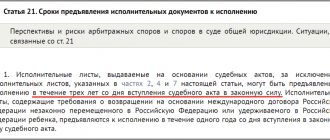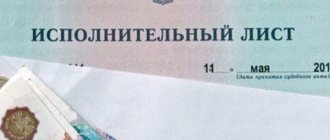Legislation provides for a period of 6 months to contact a notary and enter into inheritance. This period is prescribed in Art. 1154 of the Civil Code of the Russian Federation. Its countdown begins from the moment when the inheritance case is opened. This period should be sufficient to make a final decision on whether to accept the bequeathed property or to refuse it. You need to collect the necessary documents in six months.
Dear readers! The article talks about typical ways to resolve legal issues, but each case is individual. If you want to find out how to solve your particular problem , contact a consultant:
+7 (499) 938-81-90 (Moscow)
+7 (812) 467-32-77 (Saint Petersburg)
8 (800) 301-79-36 (Regions)
APPLICATIONS AND CALLS ARE ACCEPTED 24/7 and 7 days a week.
It's fast and FREE !
The legislative framework
The statute of limitations begins when a citizen learns that he is entitled to an inheritance or should have known about it. The period is 3 years. If the heir did not know about the inheritance matter at that time, this does not mean that his right to the testator’s property is lost. Regardless of the period of application, the heir who has valid reasons for his absence has the right to a part of the inheritance. The reasons for his absence must be documented.
In the Code of Civil Procedure Art. 196 introduced an amendment to the statute of limitations, according to which the limitation period is limited to 10 years.
No prescription
Consideration of claims for the protection of interests of a special non-property nature, the rights to which passed to the heirs, intangible benefits that belonged to the deceased, is not bound by statute of limitations, except in cases specifically provided for by law. For example, protection of the copyright of the deceased is possible by the heirs within the duration of the author's rights.
The statute of limitations for applying for judicial protection also does not apply to a citizen’s claims for recovery of damage caused to health. The heir who accepted the property of the deceased is liable for his debts. Therefore, he is obliged to compensate for property damage caused by the deceased to the life or health of another person, as well as moral damage; these property obligations are inherited along with the rights.
It should be taken into account that the right to claim compensation for moral damage caused to the testator is not transferred to the legal successors, since the rights inextricably linked with the personality of the citizen are not included in the inheritance mass.
Concept and purpose
The transfer of rights to the property of the deceased is carried out on the basis of his will or by law if there is no will. The law prescribes a specific algorithm for the distribution of inheritance by kinship.
According to the law, relatives have the right to inherit property; they are divided by law into categories according to the degree of relationship in relation to the testator. According to the will, anyone can receive the inheritance.
There is a special category of citizens who receive a mandatory share of the inheritance upon acceptance, regardless of whether they are mentioned in the will or not. We are talking about the children of the deceased: marital, illegitimate, recognized and unrecognized (if the fact of paternity is documented). The transfer of property is carried out by a notary between the participants in the notarial case who have officially declared themselves.
After the death of the testator, relatives claiming property rights write applications to be recognized as heirs. Within 6 months, the notary reviews the inheritance case, if necessary, requesting additional documents confirming the family relationship with the deceased.
Duration of the will
In civil law there is no limitation on the limitation period for wills drawn up in accordance with the requirements of the law. Therefore, there is no fundamental difference in the date of execution of the document, provided that there were no other wills or orders after it revoking it.
However, there are some reservations in the law. In particular, we are talking about wills drawn up in emergency circumstances. According to Art. 1129 of the Civil Code of the Russian Federation, the validity of a testamentary document is limited:
- a month from the date of drawing up the act, if the emergency circumstances have passed, nothing threatens the life of the testator:
- 6 months from the date of death of the testator (recognition of the testator as deceased), if the death occurred under the influence of (or as a result of, or during) extraordinary circumstances.
But all this concerns only the legal force of the document relative to the time of its preparation. For the heirs, it is important to have a slightly different validity period - the period when they can apply the document.
During what period can property be accepted by law and by will?
After the applicants have submitted applications to take possession of the property of the deceased, the notary begins the inheritance case. Its essence is to legally distribute property between heirs. To do this, for 6 months the notary examines the documents provided and examines whether there are any applicants who have not declared themselves. If the validity of the heirs' claims is confirmed, a certificate of the right to inheritance is issued six months later.
The law allows for the concept of actual entry into inheritance (Article 1153). The legality of the action is confirmed by the facts:
- Use of personal funds to maintain the property of the deceased.
- Payment by the heir of the testator's debts.
- Protection of the testator's property from encroachment by other persons.
The decision to enter into inheritance is made in court.
The distribution of property between legal heirs must be carried out within 6 months. After the expiration of the period, with a certificate in hand, they can register the property in their name.
If after 6 months an heir appears who has not declared himself for a good reason in due time, then the issue of redistribution of shares is resolved in court.
From what moment does the countdown begin?
The countdown of time begins from the moment when the citizen learned about the violation of the right or should have learned about it.
How to understand the phrase: “should have known”? For example, a notary announces a will to the relatives of the deceased in someone else's favor. This is considered the moment when a citizen should have learned about the violation of his right. If, after several years, he declares the right to inheritance, citing the fact that he “just learned” about the will, the defendant has the right to claim that the statute of limitations has expired.
Factors that force recovery
The heir is not deprived of the right to receive a share of the property of a deceased relative if he does not appear before the notary in due time to declare his rights. Restoration of rights can be achieved through the court by writing a statement of claim and submitting documents confirming that its absence was caused by good reasons.
Certificates of acceptance of inheritance that have been issued are invalid. The entire inheritance mass is distributed anew, taking into account the emergence of another applicant.
The legislation does not provide an exact list of factors by which it is possible to restore rights, but during the consideration process the court may satisfy the claim if there are good reasons:
- It was not possible to obtain information about the death of a relative.
- Lack of information about inheritance.
- Long-term illness, stay in a coma.
- Living in another country.
- Staying in places of detention.
Regardless of the reasons for the absence of heirs, the court considers each specific case subject to the provision of accompanying evidence in the form of official certificates, confirmations, eyewitness accounts and other things.
What does entering into an inheritance actually mean, read the article “How the procedure for actually entering into an inheritance is carried out.” Is it possible to refuse an inheritance? The answer is here.
Is it possible to challenge the decision?
The legislation of the Russian Federation provides for the possibility of challenging an inheritance.
So, in order to recognize the issued certificate as invalid, the following reasons are distinguished:
- irregularities in paperwork;
- an incorrectly drawn up will;
- revealing the heir's unworthiness;
- establishing new facts about the testator’s activities;
- identification of new persons claiming inheritance;
- Obviously, this is not a complete list of reasons that are considered sufficient for going to court to challenge an inheritance case.
The trial includes the following procedures:
- evidence of a family or marital relationship with the deceased;
- establishing the fact of cohabitation with the testator;
- confirmation of actual acceptance of property;
- extension of the time frame for entering into inheritance.
If there are several applicants, then they can come to an agreement to pay some compensation in favor of one of the heirs for abandoning their share. In this case, mandatory notarization of such a procedure will be required. Moreover, the registration must be carried out in written format.
As judicial practice shows, this aspect is often not fulfilled. In this regard, the Government has developed the possibility of restoring such a time frame to ensure the protection of the interests of citizens who, for good reason, were unable to immediately issue a certificate or challenge the right to it.
To exercise rights, you must correctly install
time of opening of inheritance
Find a sample application for actual acceptance of inheritance here.
If you missed the deadline for accepting an inheritance, see what to do in this publication.
How is the statute of limitations for inheritance calculated?
According to the law, the statute of limitations for an inheritance case is at least 3 years and should not exceed 10. Calculation begins with the opening of an inheritance case. It opens the day after the death of a citizen or after the fact of his death is established in court. The fact of death is established by the court, for example, if a person goes missing.
The beginning of the calculation is made in cases where the testator has left a will, all claimants to the property have been notified of the death of a relative and have written statements stating that they are claiming their share.
After reviewing the inheritance documents within six months, all confirmed heirs receive their share of the property.
Those who did not manage to meet the deadline have the opportunity to sue their part of the property, since the legislation, having determined the limitation period for inheritance, made it possible for the heirs to receive what was bequeathed to them or due by law.
Counting order
The limitation period is calculated from 2 positions:
- From the moment when the heir learns or should receive information about the right to a share in the inheritance.
- From the day of the death of a relative.
The notary opening the inheritance case must find out whether all the heirs have been found and notified of the death of the testator. If at least one of the applicants is not notified, the statute of limitations begins to count for him. The limitation period is calculated continuously, unless force majeure occurs. The Civil Code stipulates the possibility of interruption, suspension and renewal of the term.
Force majeure situations include, for example, those when a citizen cannot defend his rights while being seriously ill. As soon as the obstacles disappear, the statute of limitations continues to run. In the final calculation, time periods with obstructive situations are cut out. The presence of all obstacles must be documented.
Minimum period and maximum limitation
Citizens often confuse two concepts: the period for accepting the property of the deceased by right of inheritance and the statute of limitations. It is necessary to distinguish between them, since, despite the fact that they are interrelated, the limitation of periods is established to achieve different goals. Acceptance of an inheritance within 6 months implies the period of entry into inheritance.
6 months is enough time to document the relationship with the deceased. If he left a will, this simplifies the procedure for entering into an inheritance, since the will of the testator is the basis for the distribution of the inheritance.
The statute of limitations for inheritance means the possibility of “late” applicants entering into the inheritance.
The limitation period has time periods: 3 years - minimum, 10 years - maximum periods for citizens who, for objective reasons, did not have the opportunity to declare themselves immediately after the death of a relative.
Validity period of a will for inheritance
The law determines that heirs, regardless of the method of acquiring the inheritance, must apply for its registration within a certain period. For heirs under a will, it is 6 months from the date of opening of the inheritance. This requirement is established by Art. 1154 of the Civil Code of the Russian Federation.
It is believed that the allotted time is enough for interested parties to collect the necessary documents and contact the notary with the appropriate application. Consequently, the validity period of the will after the death of the testator will be only 6 months for the heirs, as in the case of the usual acceptance of inheritance by law for heirs of the first stage.
If the allotted time is missed
The Civil Code stipulates a long period for the emergence of new claimants to the property of the deceased. There are times when these deadlines may be missed. A person who learns about an inheritance cannot immediately appear to declare his rights for objective reasons. The legislation allows the resolution of the inheritance issue in court, even if the time provided by the Civil Code has been lost.
When can the court extend the period?
A citizen who learns that he is entitled to an inheritance, after the expiration of the 10-year period established by law, can file a lawsuit in order to prove that his rights have been violated.
Such applications are considered by the court in a special procedure. The judge to whom the case is transferred checks the compliance of the format of the application and its content with legislative norms, and the composition of the attached documents. If no claims arise against them, he sets a date for consideration of the case.
At the same time, a request is made to the notary office where the inheritance case was formed. This is necessary to ensure completeness of information on the essence of the issue under consideration.
During the process, the circumstances due to which the heir did not declare himself and the reasons that prompted him to do so are clarified. Only the court determines the true validity of the applicant's arguments. If they are found to be valid, the inheritance case is subject to review, regardless of how many years have passed since the death of the testator.
How to restore the right
Based on Article 1072 of the Civil Code, the court restores the missed limitation periods and adds the citizen to the list of heirs if the following conditions are met:
- The deadline was missed for objective reasons.
- There is an evidence base in the form of documents confirming the rightness of the applicant.
- The citizen filed a claim no later than six months after he learned that he was entitled to an inheritance or after the reasons that prevented him from filing the claim had disappeared.
All certificates of ownership of the testator’s property issued earlier are canceled, and the distributed property again becomes the common inheritance mass. The court determines measures to protect the newly-minted heir and includes him among the legal successors.
The only condition for a fair judicial verdict is a solid evidence base explaining the reasons for the citizen’s absence when opening an inheritance case.
Having recognized the right of the new heir, the court re-determines the shares due to each. There are many nuances to the distribution of property after restoration. For example, if there were no heirs other than him at any level, then all the property went to the state. In this case, the defendant is the local municipality. He is obliged to return to the citizen the property due to him.
Why you need a certificate of inheritance, read the article “How to draw up and receive a certificate of inheritance.” Find out how to search for an inheritance here.
Where to contact
After the death of a citizen, heirs can find out whether he left a will on the distribution of his property. An official will is drawn up in a notary's office at the place of residence of citizens, so the heirs can easily find out about its contents from the notary. If the deceased relative did not have time to write it, then the property is distributed according to the law. The notary opens the inheritance case, and after 6 months, all heirs are issued a certificate of inheritance.
The authority that is called upon to resolve conflict issues between recipients of inheritance is the court.
A claim can be filed by:
- An heir who believes that his rights have been violated during the distribution of shares.
- Relatives who were not included in the will.
The court resolves all issues that the relatives were unable to resolve peacefully, acting on the basis of legislation and taking into account only real documents confirming the validity of the statements of the offended relatives.
Drawing up an application
Applications for restoration of the right to inheritance are considered by the district court. In the application, the citizen must describe the reasons why he did not attempt to declare his rights to inheritance in a timely manner.
Information that must be provided in the claim:
- The date of receipt of information about the death of the testator.
- About the reasons for the absence of a relative at the time of death.
- Reasons why the applicant did not claim the inheritance.
- What are the grounds for challenging a will?
- Links to articles of legislation according to which he has the right to challenge an inheritance case.
The plaintiff petitions to restore the statute of limitations from the moment he learned about the death of a relative or about the inheritance due to him. He prescribes a list of documents that he submits for consideration by the court. On their basis, the evidentiary basis of the claim is built.
It is preferable if a probate lawyer takes part in drawing up the claim. He will be able to correctly advise which legislative acts need to be referred to in a particular situation. The application must present only real facts that have become an obstacle for the plaintiff to participate in a timely manner in the procedure for distributing the inheritance.
Judicial process and procedure
An appeal to the court begins with writing an application to restore the statute of limitations, attaching documents confirming the facts stated in the claim. The application is registered in the court office, and from that moment it goes to the judge. He considers the correctness of the claim and the availability of all necessary documents. Having delved into the essence of the case regarding the restoration of terms in relation to the newly emerged heir, the judge sets a date for the trial.
The court requests an inheritance file, on the basis of which the declared heirs have received the official right to accept a share from the inheritance mass. The essence of the trial is to find out whose fault it was that the heir was not informed about the death of the testator or to confirm that there is significant evidence of his absence.
If there is insufficient documentary evidence, the court may call witnesses to the hearing. As a result, the court must decide on the legality of the citizen’s claims to a share in the property of the deceased or refuse to satisfy his claim. If the decision is positive, the heir’s further actions are to register the assigned share in Rosreestr and obtain a certificate of ownership legally. If the court does not consider the evidence provided sufficient for a positive verdict, the plaintiff can challenge its decision in a higher court.
Step-by-step instructions: how to apply?
First of all, you need to comply with the rule of jurisdiction. The statement of claim must be filed with the territorial court located at the place where the inheritance was opened. The place of formal opening of the inheritance is the conditional location of the property mass (the last place of residence of the deceased testator). In this case, the appeal should only be made to the district court.
The subject of the application is the restoration of imperative deadlines for the implementation of claims to inheritance. After specifying personal data (heir data) and court details, the main descriptive part of the application follows.
Here the applicant in free form describes all the circumstances due to which he was unable to realize his inherited preferences on time.
This part should provide links to supporting documents attached to the claim in the form of attachments. The absence of supporting documents (factual information) is equivalent to the absence of sufficient grounds to satisfy the application.
The application is submitted in person (or by proxy) with a package of documents attached: a copy of the civil passport, a receipt for the previously paid state fee (fixed amount - 300 rubles). You must contact the court office directly.
We talked about how to competently draw up a statement of claim to restore the deadline for accepting an inheritance here.








